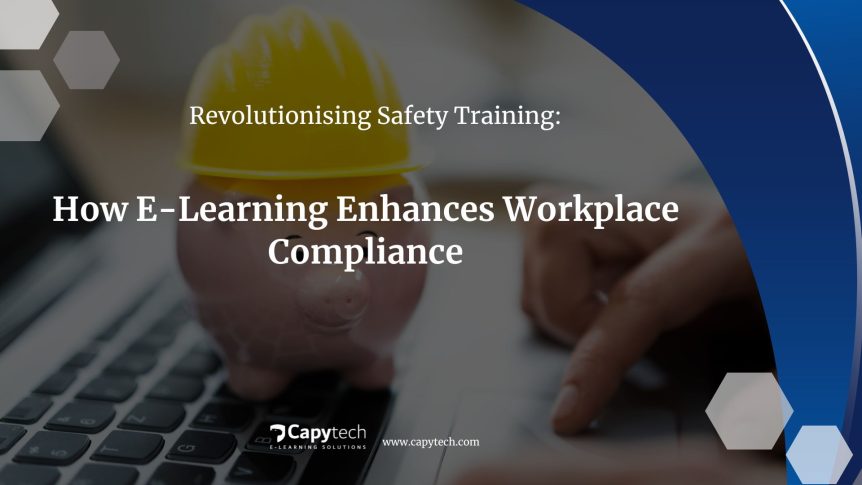Revolutionising Safety Training: How E-Learning Enhances Workplace Compliance
In the rapidly evolving world of workplace safety and compliance, the integration of e-learning has marked a significant shift in how organisations approach training and education. The digital revolution, propelled by advancements in artificial intelligence (AI), has not only transformed the delivery of educational content but has also redefined the strategies employed to ensure workplace safety and compliance. This blog post delves into the depths of how e-learning, particularly when enhanced by AI, is revolutionising safety training and promoting a culture of compliance within the workplace.
The Role of AI in E-Learning for Workplace Safety
The introduction of AI into e-learning has been a game-changer across various sectors, including workplace safety training. AI’s capability to provide personalised feedback and assessments has made it possible to tailor safety training programmes to the specific needs and learning paces of employees. This personalisation ensures that each employee gains the most from the training, leading to better understanding and implementation of safety protocols.
Moreover, AI tutors are becoming increasingly significant in customising learning paths for employees in safety training. These intelligent systems adapt to an individual’s learning style, making complex safety guidelines more accessible and understandable for everyone. By doing so, AI tutors not only enhance the learning experience but also empower employees to apply safety practices more effectively in their daily operations.
Enhancing Engagement and Retention
Engagement and retention are critical to the success of any training programme, more so in the context of workplace safety. The impact of AI on student engagement in e-learning has been profound, with interactive modules and real-time feedback mechanisms keeping learners engaged and motivated throughout their training journey. These interactive elements ensure that employees are not just passive recipients of information but active participants in their learning process, leading to better retention of safety protocols and practices.
Streamlining Compliance Through E-Learning
Compliance with safety regulations is a moving target, with standards and laws evolving continually. E-learning platforms offer the flexibility to update training modules quickly and efficiently, ensuring that all training material is current and in line with the latest regulations. This agility ensures that organisations can keep their employees informed about new safety standards and compliance requirements without significant downtime or disruptions to their operations.
Furthermore, the use of AI in analysing and providing feedback within e-learning environments ensures that compliance training is not just a one-off event but a continuous process. AI-driven analytics can identify trends and gaps in an employee’s understanding of compliance issues, allowing for the delivery of targeted training to address these areas. This ongoing learning process reinforces a culture of safety and compliance within the workplace.
Conclusion
The integration of e-learning into workplace safety and compliance training has been significantly enhanced by the advent of AI. From customising learning experiences and improving engagement to ensuring that training material remains up-to-date, AI is at the forefront of revolutionising how organisations approach safety training. As we move forward, the continued development of AI and e-learning technologies promises to further empower organisations in building safer workplaces and fostering a compliance-oriented culture.
The transformative potential of AI in e-learning is not limited to safety training but extends across various domains of workplace education and training. As businesses continue to harness the power of AI and e-learning, we can expect to see more innovative approaches to training that not only improve compliance and safety but also enhance the overall learning experience for employees.
For organisations looking to stay ahead of the curve in workplace safety and compliance, embracing e-learning enhanced by AI technologies is not just an option but a necessity. The future of workplace training is here, and it is digital, personalised, and powered by artificial intelligence.
